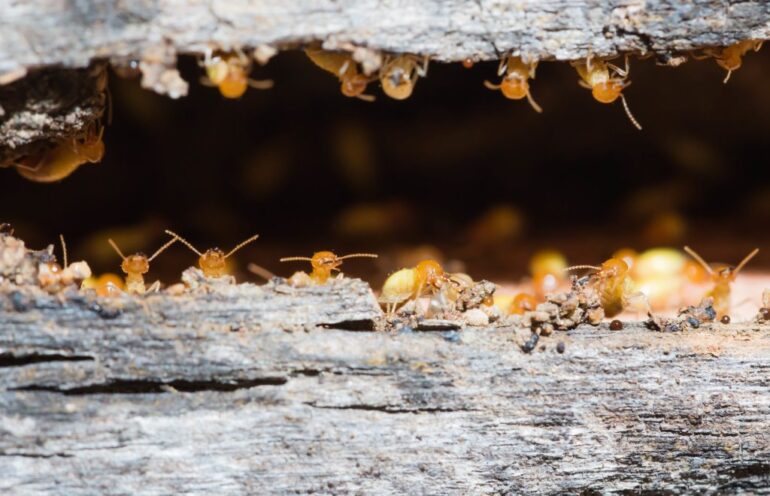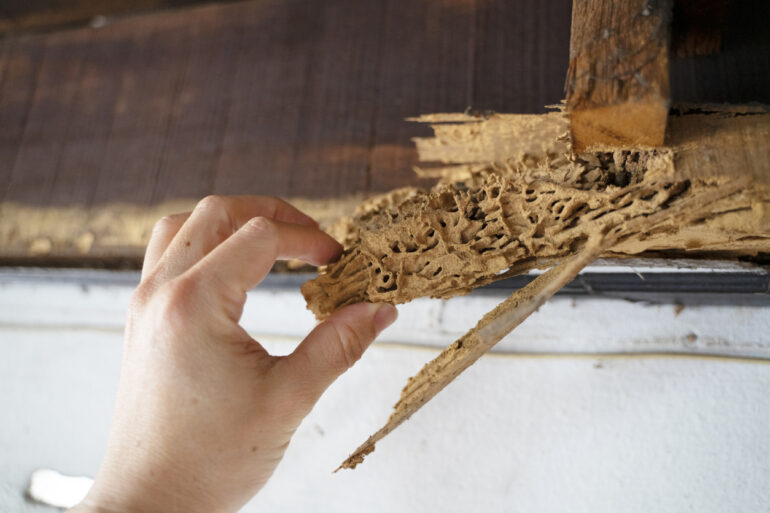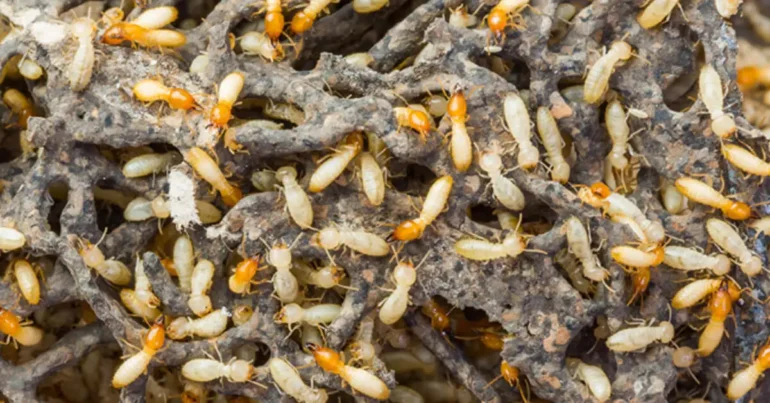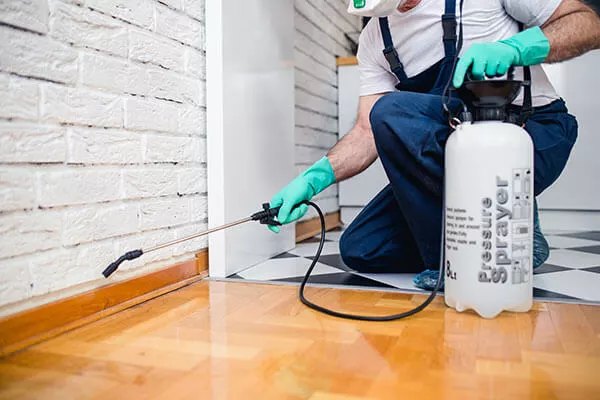When it comes to termites, it’s in every homeowner’s best interest to be proactive. Especially since these devilish little critters usually nibble their way through your home’s timber structures, causing irreparable damage.
Unfortunately, termites are a major problem across all areas of Australia. It’s because of this that home pest control involves termite prevention treatments. Any pest controller will tell you that dealing with the issue as early as possible will reduce eventual damage.
Prevention is Better than Cure

Many homeowners are unaware that there are over 350 native termite species that live across Australia. About 40 of these are destructive to homes and even more alarming is that a termite population may exceed one million and the queen can live up to 50 years.
This means that once they’re on your property, you will have a hard time getting rid of them. They can also cause a significant amount of damage in as little as three months. It’s with this in mind that the Australian Building Code requires adequate termite protection for all residential and commercial buildings. In addition to these measures, there are also a few steps you can take to keep termites at bay.
1. Eliminate Food Sources
One of the criteria that make your space appealing to termites is an abundance of food. For the most part, termites thrive on cellulose, which they find in wood lying around your home or the structure of your home.
Here are a few ways to limit their access to timber around your home:
- Remove wood piles that may be stacked against your home or close to your home’s foundation. Rather move these to a dry area such as a shed.
- Use the oldest wood in your wood pile first as these are the ones termites will target first.
- Have your outdoor furniture treated.
- Seal any cracks and crevices in your walls, foundations, and roof.
- Do routine inspections around your home to check for signs.
2. Keep Your Space Dry

Source: openhouseinsurance.com
Moisture is an essential requirement for termite colonies. If this moisture extends to any timber structures or wood lying around, it’s more appealing. This means it’s essential to keep your home and outside area as dry as possible. Check your roof for leaks and also repair outdoor dripping taps. Remove puddles of water that may gather near your foundation after heavy rain.
3. Reduce Plant Debris
Termites aren’t only attracted to timber. They can also be found in dense vegetation, especially if this is made up of shrubs or potted plants that may be next to your home. Not only will this be an excellent place for them to live, but it’s close to their main food source.
Minimize this by reducing any plant debris as soon as possible. If you live in a termite-prone area, it’s essential to remove shrubs from right next to your home’s outdoor walls. Rather place your shrubs in pots that aren’t close to house walls.
4. Use the Right Wood
Another key aspect to consider is the types of wood you use to build structures on your property. This is because termites are more attracted to certain types of timber due to their cellulose content.
If you’re going to add patios, decks, or other extensions to your property, then the number one rule is to avoid softwood. Additionally, speak to your pest controller about the best way to treat the chosen timber before installation.
5. Check for Termite Infestations in Your Neighborhood

No matter how much effort you put into keeping your property termite-free, this may not always be enough. This is especially true when neighbours have termites, or you live in an area close to open fields that surround your property.
While neighbours may not be truthful about having termites, you can try to discover if there is a problem by checking the area close to your fences to see if there are signs of termites. Remember that termites aren’t solitary creatures, so, if you see one, there is more than likely a nest nearby. In this case, speak to your pest controller for suggestions on a specialized treatment to keep them from invading your home.
6. Invest in a Termite Control Treatment

A huge mistake that homeowners often make is that they only reach out to a pest controller once they spot a termite or stumble across the damage that’s already been done. By this time, you’re going to be spending a considerable amount of money on repairs or replacements.
To overcome this problem, invest in termite control in advance. This type of treatment usually involves termite barriers and routine termite inspections. In most cases, this will prevent termites from moving in. If you’re aware of existing termite issues in the area, mention these to your pest controller so that they can adjust the treatment.
Final Thoughts
By using the guidelines we’ve shared, you’ll easily be able to keep your home and workspace termite-free. Combining these tips with an annual termite treatment will add the extra protection your home needs. When it comes to termite prevention, it’s always best to be proactive!
